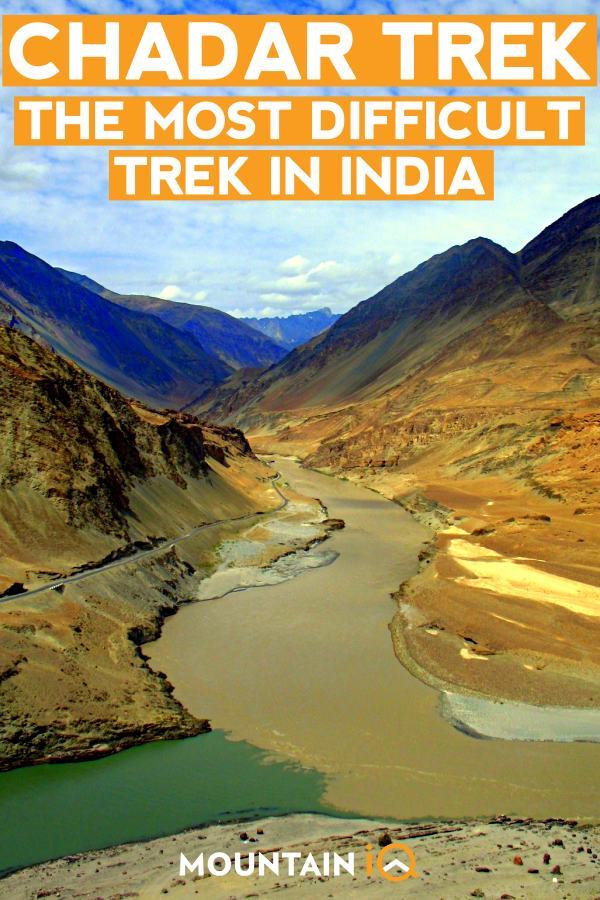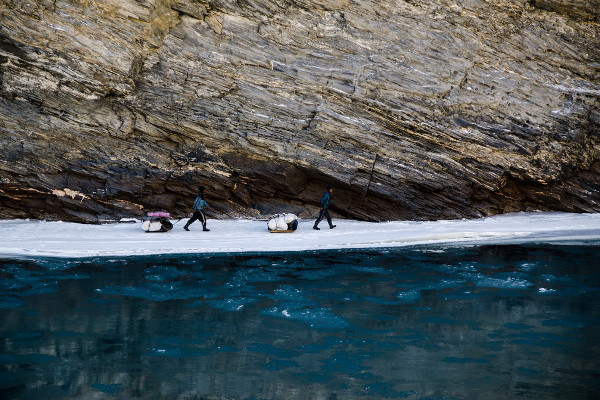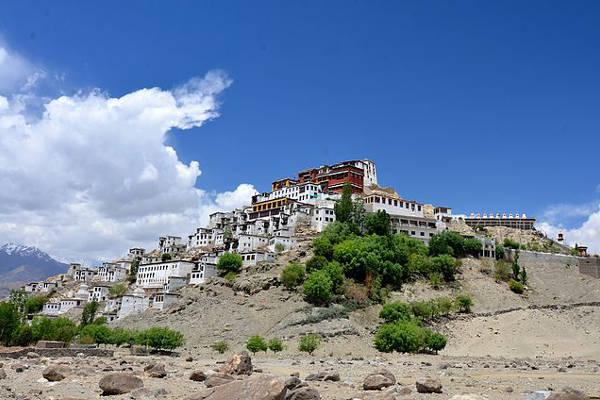The Chadar Trek, or Zanskar Gorge, is widely known as one of the most difficult treks in the world. If you're an avid trekker, then chances are this wild and challenging trek is on your bucket list.
Chadar Trek Overview
The Chadar Trek is one of the most wild and beautiful hikes on the planet. Frequently covered by the world's top adventure channels and media outlets, the Chadar Trek takes hikers through a frozen river valley into the very heartland of India’s Ladakh region.
The region’s harsh desert environment and towering mountains make the Chadar trek one of the most popular treks in the Ladakh area. Very few treks are as remote as the Chadar and even fewer are conducted in high winter. The trek is not for the lighthearted as temperatures are often lower than -10 degrees celsius in the day and -20 at night.
Cut off entirely from the outside world, the Zanskar river is the only outlet for locals wishing to venture further into the Ladakh region. The trail has been used for nearly a thousand years by the Buddhist monks living in the region. You’ll trek the same route, walking over the frozen river as you cut a path towards Naerak. You will need to have a good level of stamina and fitness to have a really good time.
Accommodation is riverside camping.
Please Note: The Chadar trek is ideally suited to seasoned trekkers looking to experience one of the most remote places on earth.
Regional Map
The Chadar Trek is located in the Zanskar region of Ladakh which is part of the Indian state of Jammu and Kashmir.
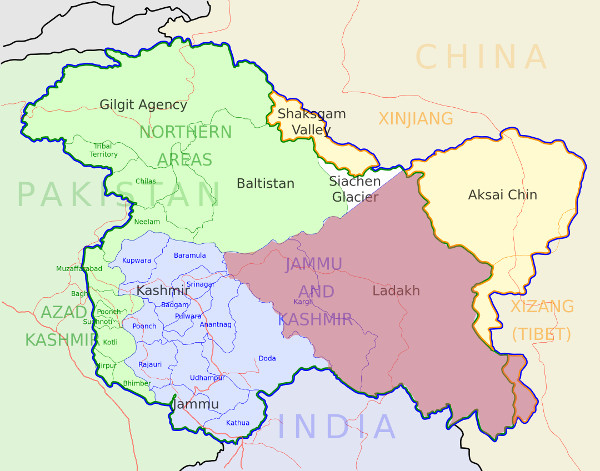
Chadar Hike Itinerary
Below is a detailed Chadar Trek itinerary. Please note that this is a typical itinerary that we would expect many operators to adhere to. However, some tour operators offer variations on this route.
Day 1-2: Arrival in Leh (3500 m)
After taking a flight from Delhi, you will arrive in Leh – the highest airport on earth! Take in the cool mountain air as you explore town before bedding down in your hotel for the night.
Day 3: Drive to Chilling – Hike to Tilad Do (3100 m)
After breakfast, your operator will take you by car to your starting point at Chilling roughly 3 hours away. Along the way, you will no doubt visit the important Buddhist temple of Shanti Stupa. Once in Chilling you will drive a little further to Tildad Do where your hike begins. The drive is fairly high and windy and you’ll need to hold your nerve as the road becomes tighter and more narrow.
You will then trek for several kilometres to reach your first coming ground. Along the path, you will walk for the first time on the river ice and get to grips with the cold weather of the region. Set up your tent quickly before the cold night sets in!
Day 4: Tilad Do to Shingra Koma (3170 m)
Today, you will be walking for almost 12 km as you venture along the valley floor towards your campsite at Shingra Koma. Make sure to follow the lead guide as you will be walking on river ice that can often crack.
As you walk, make sure to take in the incredible rock faces and surrounding snow-capped peaks as you walk in the footsteps of generations before you. The landscape is truly spectacular during winter and very few people get to witness such remote valleys.
Day 5: Shingra Koma to Tib Cave/Tibb (3225 m)
Today, you continue your journey along the river valley taking in the incredible gorges and frozen inlets as you venture towards Tib Cave.
The cave is a huge opening in the rock face in which you will camp for the night to shelter from the snow. Make sure to drink plenty of butter tea to keep your body warm and strong.
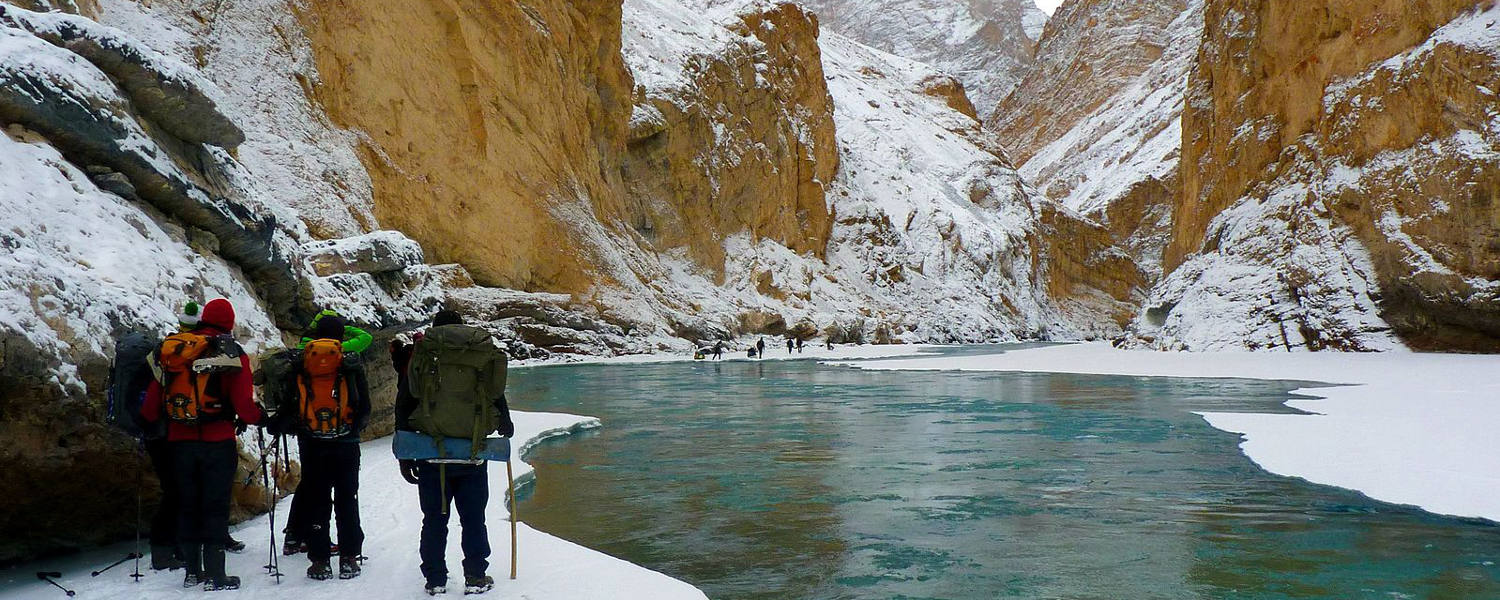
Day 6: Dib Cave/Tibb to Camp at Naerak (3390 m)
Today, you’ll be walking for roughly 10km as you trek the most beautiful section of the valley. Along the route you’ll be dazzled by one of the world's largest frozen waterfalls and large prayer flags fluttering in the cool breeze.
In the late afternoon, you’ll reach the village of Naerak where you have the chance to explore and talk to the locals – maybe share a drink or two!
Day 7: Naerak to Tibb
Today, your return journey begins as you proceed back to Tibb. However, your path may very well be different as the river reacts to the slightest temperature changes. Sections that were frozen may now be running and vice versa. Always follow the steps of your guide.
Day 8: Tibb to Shingra Koma
As you return down the river valley, you’ll have plenty of time to react on the stunning landscape and take pictures to show your relatives and friends back home. Keep a sharp eye out for wildlife including foxes, ibex and the elusive snow leopard. Although rarely spotted, you can be assured the leopards are watching.
Day 9: Shingra Koma to Chilling – Chilling to Leh
This is your last day on the Zanskar River. You’ll trek back to Tilad Do where you will say a final goodbye to the locals before taking a car back to Leh. Relax in a warm and cozy bed for the night to rest your tired muscles.
Day 10: Departure
Today, you say farewell to your crew and depart Leh for Delhi. Here, you will take your international flight home.
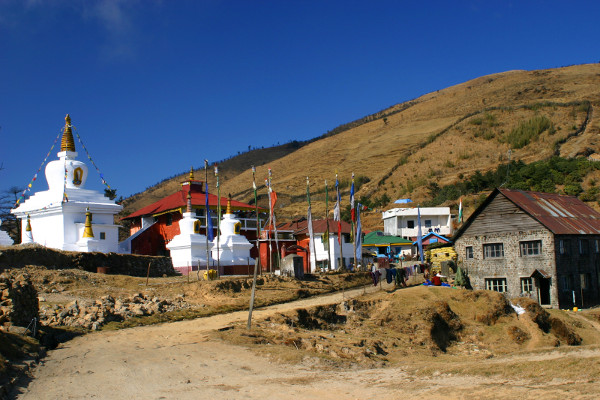
Chadar Trek FAQ
How much does the Chadar Trek cost?
The cost of the Chadar Trek varies depending on what operator you use. Local agencies often offer a guided trek for as little as US$250 per person (excluding flights). However, for an established western operator, you should look to pay at least double this. The trek can be dangerous and finding the right operator is important as your safety should be paramount.
You will also need to factor in flights, equipment, visas, vaccinations and food and drink. Each operator will offer a slightly varying package when it comes to food and drink on your trek.
- Visa, Vaccinations, Insurance etc: ~$300-$500
- Equipment (buying and hiring): ~$300-$800
- Flights to Leh: ~$1,000
- Tour Agency: ~$250 – 350 for a cheap local agency to ~$500 – 1000 for a Western trekking agency
- Tips: ~$50-$100
- Misc (additional food, unplanned travel / hotels ect): $200
- Total Costs: $2,200 – $4000
Are permits required for the Chadar Trek?
Permits are generally included with your trek costs. However, operators will often ask you to pay around US$50 for a wildlife/environment charge levied by the Indian government.
When is the best time to complete the Chadar Trek?
The best time to trek the Chadar Trek is January and February during the peak winter season. This is when the river is frozen and can be walked on (gently).
The Chadar Trek does not operate at any other point in the year.
Is altitude sickness a risk on the Chadar Trek?
Yes, the entire area is at high-altitude, and you’ll want to make sure you arrive several days before your trek to acclimatise to the thin air.
It is important to have a detailed understanding of the risks associated with high altitude trekking and how the body acclimatises.
We recommend you read our detailed article on Altitude Sickness and Acclimatisation.
How difficult is the Chadar Trek?
The Chadar Trek is considered to be one of the toughest treks in the Ladakh Region. The trail is cold, icy, often steep and always at high altitude.
Only experienced trekkers are recommended for this trek. You will need to be in good physical condition before attempting the route and have a good stamina built up.
The freezing temperatures also make the trek difficult with temperatures often exceeding -20 degrees at night and -10 degrees during the day.
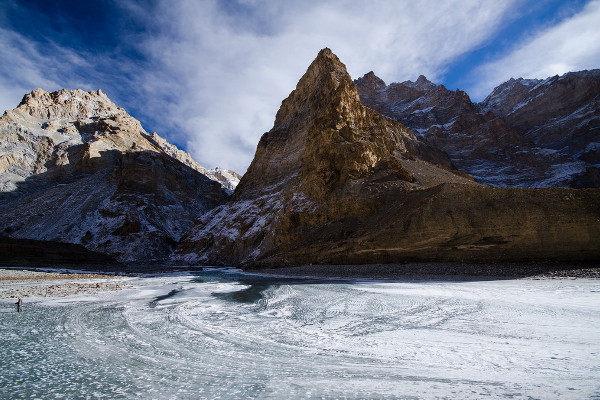
What gear do I need for the Chadar Trek?
Trekking in the Ladakh region requires a number of essential pieces of trekking clothing and equipment. The Chadar trek however requires some cold weather gear that is often not nesscary on the summer treks.
Many pieces of equipment can be rented or bought in Leh, but we recommend bringing the most important pieces of gear with you. The important thing is warmth. You’ll need a winter sleeping bag (may be provided) and good quality thermal gear.
To help you plan and prepare for your trek, we have written a detailed hiking gear list for multi-day treks.
What travel insurance do I need for the Chadar Trek?
Trekking insurance is a must on multi day hikes. This is particularly important on the Chadar Trek which is extremely remote. If an accident should occur that requires medical assistance and evacuation you will definitely want trekking insurance that can cover the costs of air ambulance and treatment.
Moreover, it is prudent to have insurance that covers you for any travel related risks, like lost, stolen, damaged or delayed baggage; flight delays and interruptions; and tour operators default.
Moreover, it is prudent to have insurance that covers you for any travel related risks, like lost, stolen, damaged or delayed baggage; flight delays and interruptions; and tour operators' default.
Are there any recommended guidebooks for the Chadar Trek?
There are a number of excellent guides we recommend for the Chadar Trek. These are:
- Trekking in Ladakh by Radek Kucharski.
- Trekking in the Indian Himalaya by Lonely Planet
- Trekking Guide to the Western Himalayas by Depi Chaudhry
- Ladakh: the Essential Guide: Including Kashmir & Manali by Partha S. Banerjee
Are there other Indian Hikes besides the Chadar Trek?
Absolutely. We also recommend doing hikes like the Singalila Ridge, Markha Valley and Ladakh for unparallelled sightseeing and experiencing Indian culture and history firsthand.
Continue browsing
See more information on India. Or check out these other Indian Hiking articles:
